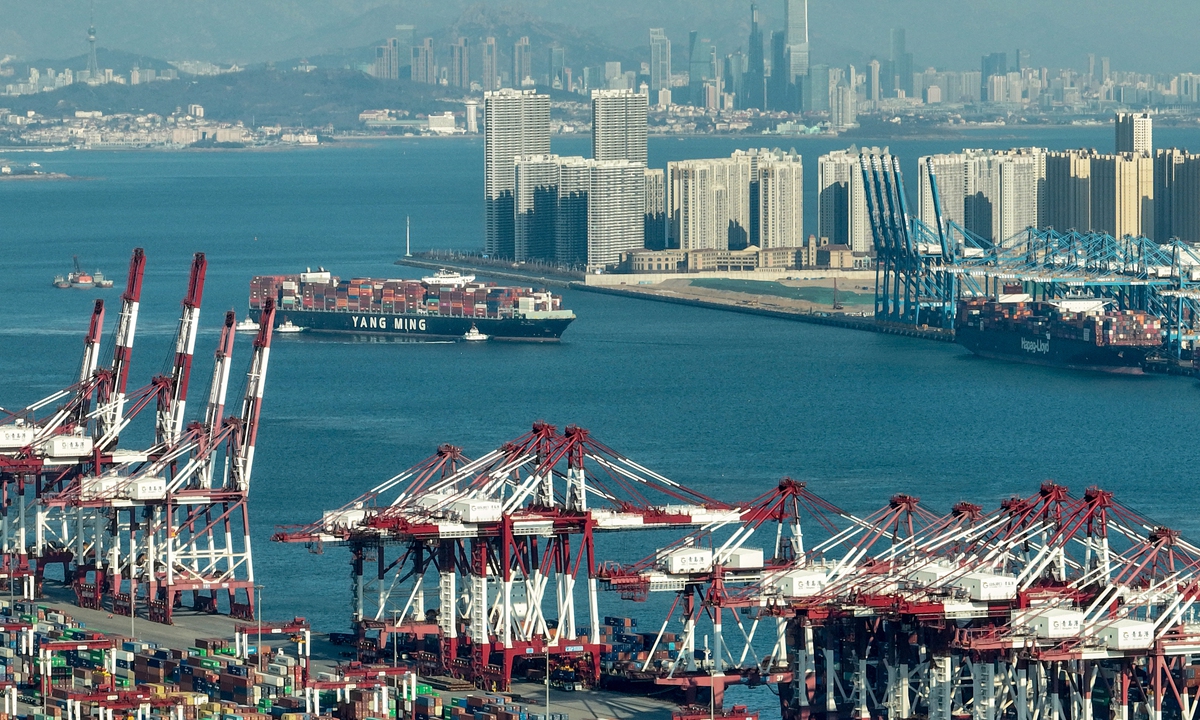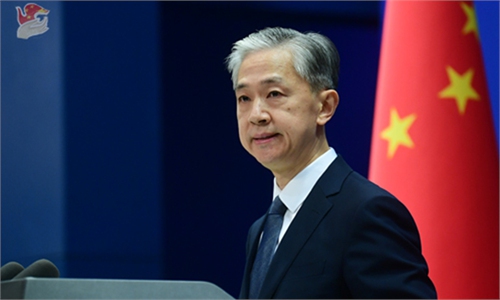China's trade off to uplifting start despite complex external environment
Govt vows more support amid global uncertainty

A busy Qingdao port in Shandong Province on February 6, 2022. China's container shipping sector registered steadfast growth despite headwinds from the COVID-19 pandemic and container shortages, indicating the country's robust foreign trade and economic resilience. Photo: cnsphoto
China's export and import growth beat expectations in the first two months of 2022, customs data showed on Monday, underpinning hopes for the economy to defy gravity amid heightened global uncertainty.
US dollar-denominated exports rallied 16.3 percent year-on-year in January-February to $544.7 billion, while imports rose by 15.5 percent to $428.75 billion, both exceeding market estimates. The trade surplus spiked 19.5 percent to $115.95 billion. Total trade grew 15.9 percent during the first two months, according to customs data.
In yuan terms, exports were up 13.6 percent, while imports jumped 12.9 percent. Total trade grew 13.3 percent to 6.2 trillion yuan.
Trade showed steady growth during the first two months, despite a more complex and uncertain external environment, said Li Kuiwen, an official with the General Administration of Customs, attributing the impressive start to the Chinese economy's strong resilience and pro-growth policy measures.
The private sector played a more prominent part in China's trade, with total trade up 16.1 percent to 2.99 trillion yuan in the first two months, or 48.2 percent of the total trade, an uptick of 1.1 percentage points from the prior year.
The resilient trade landscape was backed by persistent overseas demand, support policies to stabilize trade, a rebound in the domestic economy that prompted higher domestic demand, and rising international commodity prices due to supply constraints and geopolitical conflicts, according to Chang Ran, a senior researcher with the Zhixin Investment Research Institute.
According to a breakdown of the trade data in yuan terms, the EU was China's top trading partner during the first two months, with total bilateral trade up 12.4 percent to 874.64 billion yuan ($138.34 billion), accounting for 14.1 percent of China's total trade.
Trade with ASEAN members increased 10.5 percent to 870.47 billion yuan. This suggests that the EU temporarily regained its position as China's top trading partner.
The ASEAN bloc overtook the EU as China's largest goods trade partner in 2020 and retained its top place last year.
The position changes speak volumes about the country's diversification of its trade partners, Tang Jianwei, chief researcher at the Financial Research Center of Bank of Communications, told the Global Times on Monday.
China-US trade increased 9.7 percent to 785.92 billion yuan, with China's exports to the US up 11.1 percent and imports from the US up 5.8 percent.
The country's trade with countries and regions along the Belt and Road Initiative gained 18.3 percent to 1.92 trillion yuan, customs data showed.
Trade with Russia denominated in yuan soared 35.3 percent in the first two months, well above the 13.3-percent growth of the country's total trade.
Imports in particular are expected to rise, Chang said, citing the country's rising demand for energy, among other commodities, amid a push for infrastructure investment.
Prices of commodities such as crude oil and natural gas are projected to rise further amid the Russia-Ukraine conflict.
Among the most-watched items were soybean imports, which totaled 13.94 million tons, up 4.1 percent year-on-year, and rare-earth exports, which rose by 10.9 percent to 7,835 tons.
The stronger-than-expected trade data came after the full-year GDP growth target for 2022 was revealed to be around 5.5 percent in this year's government work report submitted on Saturday to the National People's Congress, the top legislature, for deliberation.
The 5.5-percent growth target exceeded market expectations, as policymakers prioritized stability while pursing progress.
In a note sent to the Global Times on Monday, Martin Petch, vice president and senior credit officer at Moody's Investors Service, wrote that the two sessions "set a relatively strong growth target for 2022 at a time when the country is facing rising downside pressures."
Amid growing uncertainties, the government work report said China will adopt a package of steps to stabilize foreign trade, including supporting trade enterprises, developing new forms and models of trade, and expanding cross-border e-commerce.



